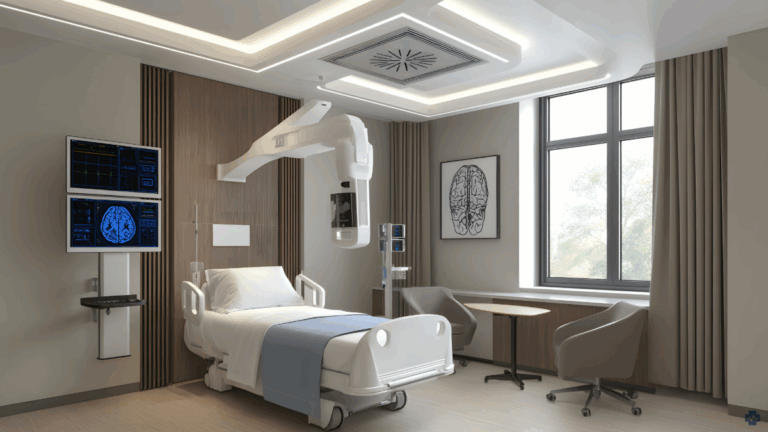The World Health Organisation (WHO) has launched an important initiative aimed at redefining the term ‘diagnostics’, opening a public consultation process that will run until May 23 this year.. The consultation seeks input from global stakeholders, including healthcare professionals, scientists, policymakers, and the general public. Its goal is to establish a comprehensive and inclusive definition of diagnostics which aligns with the evolving landscape of global health.
This initiative is critical for refining international health policies and ensuring that diagnostic technologies and practices are accurately categorised, regulated, and applied across diverse healthcare settings.
What Is Diagnostics?
In the medical and healthcare context, diagnostics refers to the process of identifying a disease, condition, or other health-related issue by evaluating symptoms, conducting tests, and analysing medical data.
Traditionally, diagnostic tools range from basic physical examinations and blood tests to advanced imaging technologies like MRI and CT scans, genetic testing, and molecular diagnostics.
Diagnostics not only helps clinicians detect illnesses but also plays a crucial role in guiding treatment decisions, monitoring progress, and preventing diseases through early detection.
However, the field of diagnostics has evolved rapidly over recent years with the advent of new technologies, particularly in molecular biology, Artificial Intelligence (AI), and remote diagnostics. As a result, the WHO recognises that existing definitions may no longer adequately cover the full scope of diagnostic tools and technologies used today.
This gap has led to the need for a more comprehensive and universally-accepted definition.
The WHO Diagnostics Initiative

The WHO’s consultation process is part of its broader initiative to improve global health systems through a clear and uniform understanding of diagnostics. The organisation has been working to strengthen health systems worldwide.
The WHO’s definition will help address several key challenges in the global health landscape. One of the primary objectives of this initiative is to improve the accessibility and affordability of diagnostic tools in low- and middle-income countries. By providing a more precise and standardised framework, the WHO hopes to guide the development of diagnostic technologies that can be used more universally, overcoming the significant barriers to healthcare access faced by millions around the world.
Another major aim is to facilitate better regulatory frameworks and policies for diagnostics. In recent years, regulatory systems for medical devices and diagnostic tools have become increasingly complex, with varying standards and regulations across countries. A globally-accepted definition of diagnostics will help harmonise these regulations, ensuring that medical technologies meet safety and effectiveness standards while also being adaptable to the specific needs of different populations.
History of Diagnostics
The concept of diagnostics dates back to ancient civilizations, where healers would rely on basic observations and rudimentary tests to diagnose illnesses. In ancient Egypt, for example, physicians would use a combination of physical examinations, knowledge of symptoms, and the patient’s history to make diagnoses.
Over time, advancements in science and medicine paved the way for more sophisticated diagnostic methods. The invention of the microscope in the 17th century allowed scientists to observe microorganisms, while the development of blood tests in the 19th century ushered in an era of scientific diagnostics.
The 20th century saw an explosion of technological advancements that transformed diagnostics, from X-rays to blood tests to the development of molecular biology and genetic sequencing.
With the advent of technologies like MRI scans, CT scans, and next-generation sequencing, diagnostics entered an era of precision medicine, where testing could reveal incredibly detailed information about a patient’s genetic make-up and the specific causes of disease.
The increasing complexity and specialisation of diagnostics have, however, raised challenges in terms of defining what exactly constitutes a diagnostic tool, particularly as the lines between diagnostics, treatment, and prevention continue to blur.
The Consultation Process
The WHO’s consultation aims to gather a wide range of input. The organisation has invited experts from various fields, including public health, epidemiology, laboratory medicine, and medical technology, to contribute their insights. At the same time, it is also encouraging the public to provide feedback, emphasising that a broad, inclusive approach is essential for creating a definition that serves global health needs.
During the consultation process (open until May 23), stakeholders are encouraged to submit their feedback via the WHO website. After collecting and reviewing this input, the WHO plans to release a final definition, which will serve as a foundational element for global health policies and the development of new diagnostic tools.
A Step Toward Clarity
By seeking public input, the WHO is ensuring that the definition of diagnostics will be inclusive and relevant to all corners of the global health community. This initiative underscores the centrality of diagnostics to healthcare, not only for disease detection but also for improving overall public health, access to care, and health equity worldwide.

